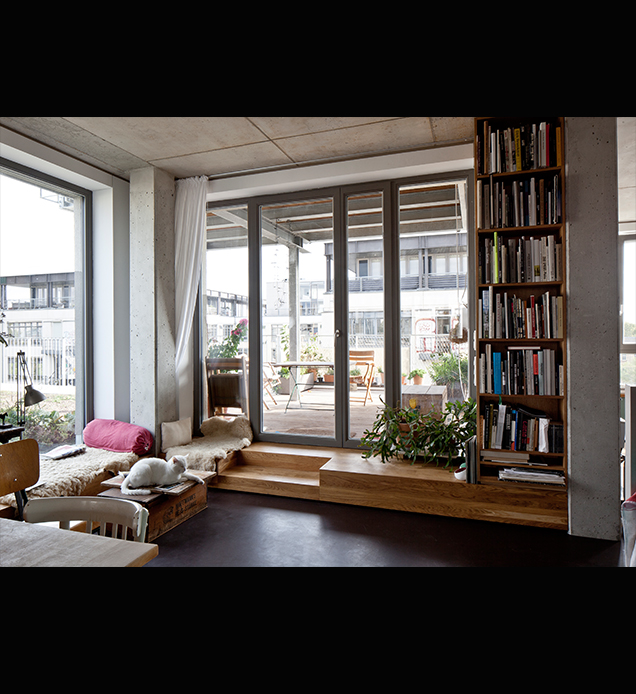In the Mirror’s Cave – Bogdan Ghiu
«Plato's Cave» is one of the widest known allegories in Occidental culture, thus universalized – or, more precisely, universalizing. Yet

«Plato’s Cave» is one of the widest known allegories in Occidental culture, thus universalized – or, more precisely, universalizing. Yet what is this image, this construct: myth or allegory? Both, it was said. As a myth, it counts too little: there are so many myths! Yet as an allegory, it has been reverberating until our days. Thus it is operational and operationalized, morally utilized – meaning politically utilized.
«Plato’s Cave» (as well) is a pharmakon, it is to say a poison-medicine, an ambiguous and ambivalent figure that, instead of being carefully handled, so as both its faces could be efficiently and precisely utilized depending on the case, was cut to pieces and reduced to a curse, a catastrophe. It has been forgotten, out of interest, that all pharmakon is good (useful, salvaging) precisely through its bad side, and bad (ineffective, nefarious) through its good side.
«Negatively» reductive, the «cavern’s» or «Plato’s Cave» analogy serves in the affirmation or re-affirmation, in instituting or confirming a difference, but not a simple or unique difference, but one of a reverberating or proliferating character, that once put in motion, marked as such, cannot be stopped anymore, and it does not only repeat itself as such, but it «translates», meaning it propagates in a modular manner, transvestite, always as another.
«Plato’s Cave» is a diagram, a cratopoietic structure, in other words, a structure that creates asymmetry, thus power.
It is a gadget, a judging machine, actually a true depreciative court, which (thus) establishes and stabilizes a political and social difference through intellectual differentiating and judging and (thus) moral: there are some, the many, society, who is superficial precisely because it is buried, twice more remote than the Real, the real world, the only one facing the Sun of Ideas, capable to confront the unforgiving light face to face. The others, who are many, hide from the world, they bury themselves; thus «Plato’s Cave» is a self-made cave, where people enclose themselves by choice, deciding to hide from the Real and thus affirming their lack of power, the structural and substantial incapacity, therefore offering themselves to be dominated, governed, and lead on the surface of reality, in the unforgiving light of Truth: «voluntary servitude». People, all people, «the human species», confines itself and closes its own eyes, preferring the interior self-cultivating phantasm to the noble, over-terrestrial, already super-human confrontation with reality, with the full unforgiving light of Truth.
The social ordinary is under-earth, while the actual surface of the earth is already the Sky (of Ideas), the Sun (of Truth), the Ether, the Eternal. The ideal is thus naturalized, it occupies and confiscates nature, and what we could consider to be «natural» thus becomes a debilitating state of exception, a state that prefers artifice, the light that is already artificial, to the only natural light: the super-natural light.
One can already see the paradox and even the aporia of these vaguely dramatic intellectual constructs.
On another note and historical regime, art, meaning representation, as remembering and evocation of the naturally lit Real on the surface, the exposed Real, was born in (pre)humans’ and (sub)humans’ caverns: truth means exposure not only of the others, but firstly of self.
Art will have been born in «Plato’s Cave», as a moral tentative of (over)compensating the lack of courage in the face of reality on its surface, that is, face to face with the unforgiving light of the sun of truth. Thus art is as an attempt at recovering and moral rematch with themselves of the human being.
«Plato’s Cave» is actually an optical device that artificially generates darkness, obscurity, and light deprivation, thus freedom deprivation, in order to be able to artificially rebuild reality as an upside down image.
Plato’s Cave is a cinema – theater and tragedy is to be played out in an organized, controlled manner, following the surfacing collective script. Collectively still, anthropologically (thus trans-historically), «Plato’s Cave» invents «modernity». It has to be regarded not only as a diagnosis and a verdict, sanctioning a deficiency, but as an initiating ritual, carefully carried-out, through which, without the dare of voluntary burying and blinding, one cannot see; the act of seeing, does not come naturally, it has to be created. What is not usually emphasized enough from the allegorical myth «Plato’s Cave» is the fact that nobody is actually born and lives directly outside, under the Sun, but has to pass through the «cave». The difference, the morally-political discrimination, intervenes to stop the ones who at some point want to escape and, for the time being, are undecided towards facing the truth, that is, to come to the surface, showing themselves. Anyhow, without the «cave», without the re-birthing passing towards the «nature» of «artificial» seeing, created in conditions of complete darkness and blindness, provoked (controlled), it cannot be. Promoting and interestedly cultivating this non-processing and un-initiatic, thus un-allegorical usage of the allegory in «Plato’s Cave» especially by the political intellectual elites, but also by the people, has to be criticized and blamed, fought against.
Without «Plato’s Cave» we cannot do: it is an ethical device (of self-creation) before being an optical device.
As an optical device, I said that «Plato’s Cave», as a technical and experimental lab situation, is a cinema. But who goes to the cinema today anymore? And to see what? Never have the technical and artificial images accused their own artificiality, a-reality as they do today. Because in «Plato’s Cave» one would experiment the recovery and recreation of reality, through and as false images in themselves, today, in «Plato’s Cave», the falsity of images does not aim to provoke truth, thus generating the exit, the escape into reality, but evading form reality. We do not live locked up inside «Plato’s Cave», but outside of it, each of us in our own «cave»: like self-exiled hermits form «communication».
From now on, I’ll become telegrammatic. The double sense of the word «screen»: opening that implies barring.
Commenting, actually, rewriting The Republic, Alain Badiou speaks about «Plato’s Cave» as a «cinema hall», but, in terms of an already classical dissociation operated by Marshall McLuhan, we continue to think the truth, the image, thus «Plato’s Cave», in analogical terms referring to light projected from somewhere in the back and above, as much artificially (in the «cave’s» cinema) as naturally (on the surface, after emerging in the light of truth). Today, the images are not projected «transcendentally» on screens, but emanate, irradiate, «immanently» from the screens themselves: the screen is the image, the image is the screen, they apparently do not exist separately («analogically») anymore – neither the screen, nor the image, not the eyes, not the mind – only light, «stages» of light.
Just as in some advanced and extreme intuitions, old (mystical) or newer (philosophical, the most recent belonging to Bergson and Deleuze) intuitions. Light is not projected anymore, but seemingly emanates (or we better say «i-manates», if we continue speaking about the immanent) from the things themselves so that the new indistinctimmanent regime of light, the generating exposure of truth becomes not only problematic, but even impossible. How can one expose themselves in an un-projected light, to an a-directional, diffuse luminescence, to a light that does not become direction, purpose, road, dramatic scenery, but vaguely lit environment, it is to say, not properly lit, neither drowned in darkness? Like mold, our screens.
Neither ray, nor darkness: phosphorescence. Meaning waking light, controlling light – through ourselves, one from each other, and each through themselves – of the new reality stage of the «Plato’s Cave» – world.
«Plato’s Cave», in its «classical», «analogical» or «pre-digital» state, supposed decision, courage, stirring, budging, personal heroism of a doubly decided orientation, of a double subjective move through exiting (from «the cave») that signified an ascension (to the surface of truth, into the supernatural light of Ideas). Two or even three movements, three – literally – actions of subjectivity, of subject-becoming: to untie oneself, to exit, to ascend.
In the «classical», «analogical» environment of separate images, born in darkness, thus in the regime of classical projection of the image bearing lit spot, the one that decided to get up and leave, ascending, would screen the screen, would become the screen, meaning shadow, the negative hero who temporarily short-circuited the projection, the narrative flux of images.
To Plato, the «cave» was a pedagogical basement, formative and performative, where one was not guilty for being there, but if they stayed, if they wouldn’t plan to leave, to escape. Today, the cave is literally the world itself, where the lumen is not light anymore, it is luminescence, a hybrid, bastard, dubious, ghostly, a spectre between darkness and light, neither light, neither darkness, where the pharmakeutic sense of darkness has been neutralized. The double bladed pharmakon, which one would have to choose, learn to choose, has become a mix, a vitreously-liquid medium.
A world upholstered with mirrors, where what defines the «cavern» is not darkness anymore – or the dynamic, propulsive, difference between darkness and light, artificial light, natural light – but luminosity, reduced visibility, neither blinding, nor privative: strictly waking light, for wake and control, just enough for us to manage in an indistinct where there is no possibility of orientation.
What was not long ago just a nightmare is now real. And exactly reality as act of i-reality provokes not a metaphysical sensation, but a somatic one – of nausea.
Enclosed in between mirrors, vertigo, vomit. All of the same colour, mixed, un-definable, horrible (the phosphorescent green, followed by the post-combustion yellow invented by the light designers of Hollywood’s post-apocalyptic dystopias, and now, the blind cataractic white, luminosity without source, thus without sun, from Game of Thrones).
In a world that is neither crepuscular, nor aurar of the political «living dead», the falsely luminous luminescent «live fires» with their phosphorescent light who seem to promise treasures buried in their own soil, imperiously asking, as an anti-imperial pretence, again, for blood.
In other words, the («vintage») difference between hybrid(ation) and amalgam(ation), that from now on we have to start studying, understanding.
Translated by Cătălina Frâncu
 Romană
Romană English
English




